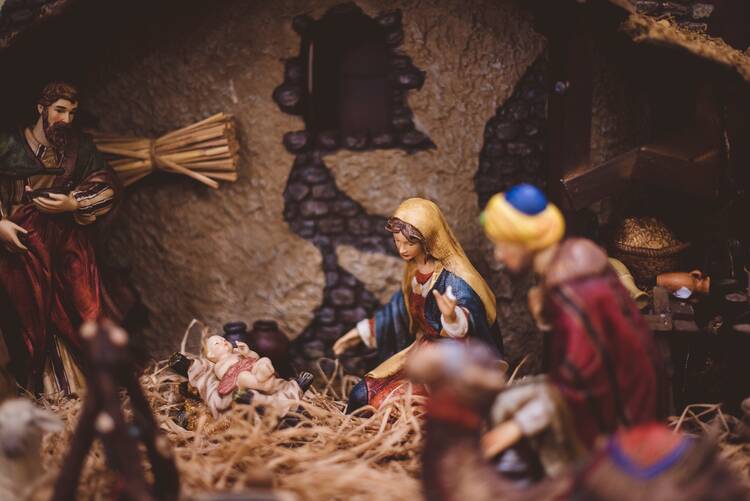Along with much more dire news, November brought us the now-perennial debate over Starbucks’ holiday cups, declarations that the war on Christmas has been won and a lawsuit prompted by the Washington, D.C., transit authority’s refusal to allow religiously themed Christmas advertisements on city buses. ’Tis the season to review First Amendment law regarding religious displays.
To be perfectly clear, the establishment and free exercise clauses prohibit the government from impeding or requiring observance of any religious holiday, including Christmas. Individuals, churches and businesses are free—within content-neutral zoning limits that may lawfully restrict the size of signs, the volume of music and the brightness of displays—to decorate their private property with religious images and give voice to religious greetings. In this regard, the First Amendment, ratified on Dec. 15, 1791, put an end to the state-sponsored war on Christmas begun by the Puritans. As Justice William Brennan noted, “To the Puritans, the celebration of Christmas represented a ‘Popish’ practice lacking any foundation in Scripture.” This opposition took legal form in 1659 when the Massachusetts Bay Colony made the observance of Christmas Day, “by abstinence from labor, feasting, or any other way,” an offense punishable by fine.
The establishment and free exercise clauses prohibit the government from impeding or requiring observance of any religious holiday, including Christmas.
By the mid-20th century, the pendulum had swung from government prohibition of Christmas celebrations toward government sponsorship of Christmas displays. The first Nativity scene case decided by the Supreme Court, Lynch v. Donnelly (1984), involved a Pawtucket, R.I., display that had been part of the town’s Christmas celebration “for 40 or more years.” The court held in a 5-to-4 ruling that the crèche was constitutional because it had a secular purpose—to depict the origins of a state-recognized holiday—and did not advance religion any more than did recognition of the holiday itself, which was accepted as constitutional. The crèche was also part of a larger secular display that included a Santa Claus and had the economic benefit of attracting shoppers to nearby stores.
Five years later, in County of Allegheny v. A.C.L.U., the court decided that a Nativity scene, which featured an angel carrying a banner emblazoned with Gloria in Excelsis Deo and was displayed in the grand staircase of a county courthouse (without a Santa Claus), violated the establishment clause. The stand-alone crèche adorned with a faith proclamation failed the endorsement test, articulated by Justice Sandra Day O’Connor to determine establishment clause violations because a reasonable observer would consider the display an endorsement of a religious message.
In the same case, the court upheld the constitutionality of a “Salute to Liberty” holiday display that consisted of a menorah, a Christmas tree and a sign from the mayor indicating that the “festive lights remind us that we are the keepers of the flame of liberty.” In this scenario, the secular words mitigated the religious impact of the menorah.
Thus, the White House and other government buildings may display Christmas decorations, whether paid for with tax dollars or donated privately, as long as they are not purely religious. In other words, adding a “Festivus for the Rest of Us” pole to the crèche makes baby Jesus constitutional.
The White House and other government buildings may display Christmas decorations as long as they are not purely religious.
The Supreme Court has never ruled on whether public schools may display Nativity scenes, but the court’s school prayer cases make it clear that school-sponsored religious activities that have a coercive effect are unconstitutional. On the other hand, a New York City public school policy prohibiting Nativity displays but permitting menorahs, crescent moons and stars was upheld by the Second Circuit Court of Appeals. This type of blatant religious discrimination is rightly criticized, but “war on Christmas” uproars over greeting card messages, mall decorations and the ethnicity of Santa Claus have nothing to do with celebrating the birth of Christ.
For Christians who want to “Keep Christ in Christmas,” Christmas is unrelated to the words cashiers and shoppers, even presidential shoppers, use to greet each other. For Christians, Christmas is the Incarnation, and the right to proclaim that good news in public is protected by the free exercise and free speech clauses.
PQ: For Christians, Christmas is the Incarnation, and the right to proclaim that good news in public is protected by the free exercise and free speech clauses.
The government may not discriminate against religious messages or displays in public spaces that are traditional or designated public fora. Traditional public fora are streets, sidewalks and town squares. These are the places in which people have gathered throughout history to talk with their neighbors and engage in public debate. Governments may create additional free speech public spaces, like special zones at public university campuses, as designated public fora. In either a traditional public forum or a designated public forum, speech restrictions must be content-neutral (meaning all topics are open for discussion), justified by a compelling government interest and narrowly tailored to be as minimally restrictive as possible. Everyone is free, therefore, to sing carols in the street and recite biblical passages on the sidewalk.
“War on Christmas” uproars over greeting card messages and mall decorations have nothing to do with celebrating the birth of Christ.
In addition to traditional and designated public fora, governments may create limited public fora on government property. These are spaces set aside for specific uses. For example, public school buildings may be opened after hours for recreational and meeting purposes, but access can be limited to student groups or discussion of specific topics, such as local history. The government may not, however, deny access based on the viewpoint of the speakers. In Good News Club v. Milford (2001), the Supreme Court held that religious viewpoints may not be excluded from limited public fora.
Thus, religious adherents who want to use a traditional, designated or limited public forum to display a Nativity scene can do so if it is incorporated into a speech event, such as a prayer service or choral concert. As a public forum, however, the space also must be open to other displays. Texas Governor Greg Abbott is appealing a recent court decision that found he violated the First Amendment when he ordered the removal of a Bill of Rights winter solstice display from the State Capitol.
The government may exercise greater speech limitations on property that does not qualify as a public forum. In Lehman v. City of Shaker Heights (1974), the Supreme Court ruled that a city may exclude all political speech from public transit advertisement space because that space was considered a nonpublic forum and the restriction served a reasonable government purpose. The D.C. transit authority is relying on this case to justify its rejection of the archdiocese’s “Find the Perfect Gift” ad campaign. According to the transit authority, it is constitutional to prohibit all religious speech from bus ads. Lower courts have split on this proposition, partly because the fact-specific analysis depends not only on the proper designation of the forum but also on whether government restrictions are consistently applied.
In the final analysis, the government has very little impact on how each person, Christian or not, decides to “honour Christmas,” as well as every other holiday from Diwali to Eid al-Fitr.











I think the deepest attack on Christmas comes from those songs and displays that foster a lovely sense of nostalgia and even community and gift giving but make no essential connection with the Incarnation. "White Christmas" and "Winter Wonderland" and reindeer are lovely and I suspect are the handiwork of one of CS Lewis' Screwtape devils:
"My dear Wormwood,-Get them all emotional and feeling good. But keep the vermin focused on what they can do for each other, not what the Enemy has done for them."
Note the reference in this issue of America that most Americans aren't bothered by the absence of Christ in Christmas. Screwtape is a master.